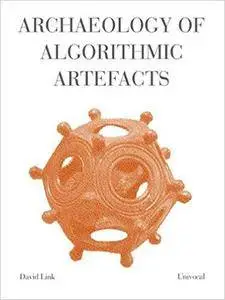Archaeology of Algorithmic Artefacts (Univocal) by David Link (2016-06-08)
English | 2016 | ASIN: B01HCAO2Y0 | 215 Pages | PDF | 18 MB
English | 2016 | ASIN: B01HCAO2Y0 | 215 Pages | PDF | 18 MB
The more historical processes become steeped in technology, the more a discipline that is capable of comprehending these materialities becomes necessary. If scientists investigate the world with complex instruments, artists integrate advanced tools into their creations, and wars are no longer won by way of an arms race, but by way of a technological race, then without an examination of the underlying artefacts, no understanding of these activities is possible. This unfavorable situation is exacerbated when the apparatuses employed are algorithmic, for example, in the case of scientific, artistic, or militant calculations performed on computers. Because of their high complexity and complete arbitrariness, the technologies and languages used become unintelligible and are lost at an extremely fast pace. Necessarily proceeding theoretically and practically at the same time, an Archaeology of Algorithmic Artefacts confronts this tendency of burying. It reconstructs the apparatuses in question and makes them run again in order to subject them to an effective analysis, but at the same time, because of the objects’ complexity it can only perform this restoration with recourse to theoretical knowledge. An Archaeology of Algorithmic Artefacts is devoted to manifold technologies, but there is one which plays a central role – the Turing Machine, or the computer. In an attempt to establish the ontology and genealogy of this special apparatus, a closer description of its construction is required, which draws us into the history of its origin, because in and of itself, the Turing Machine represents an artefact without properties. Its universality – the ability to simulate arbitrary discrete (and discretisable) apparatus – also leads to an absence of characteristics, because any concrete determination would prevent such generality.



